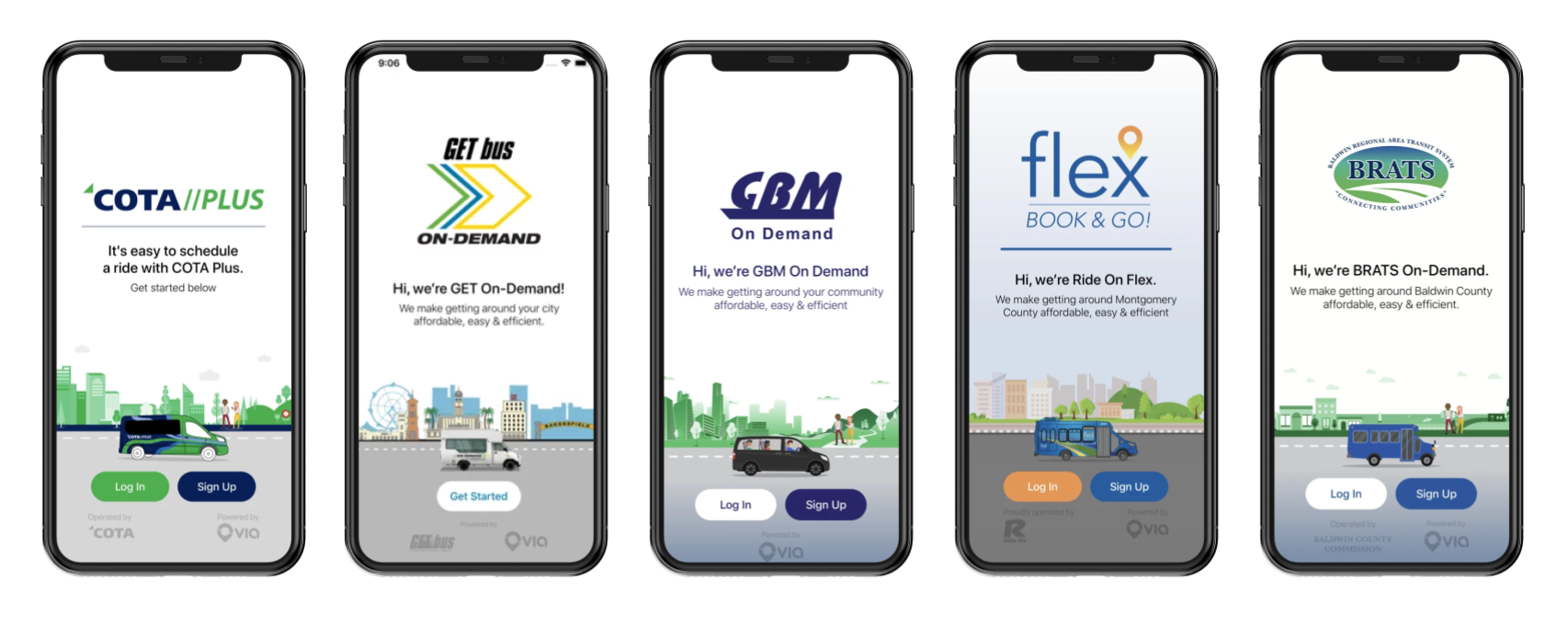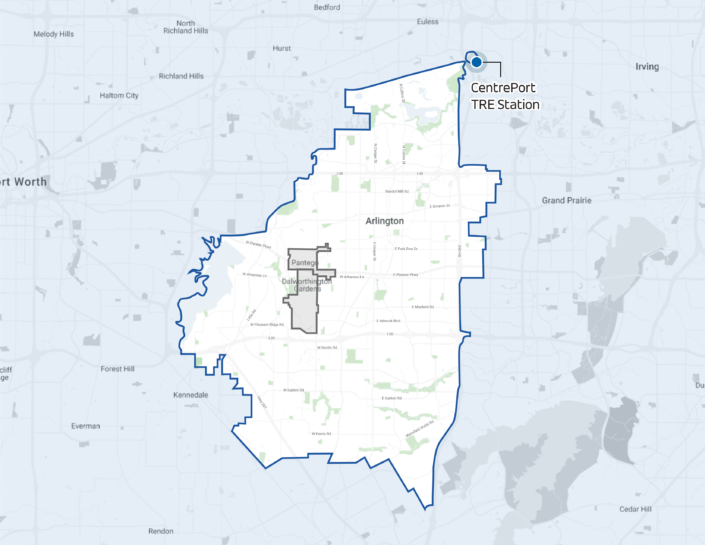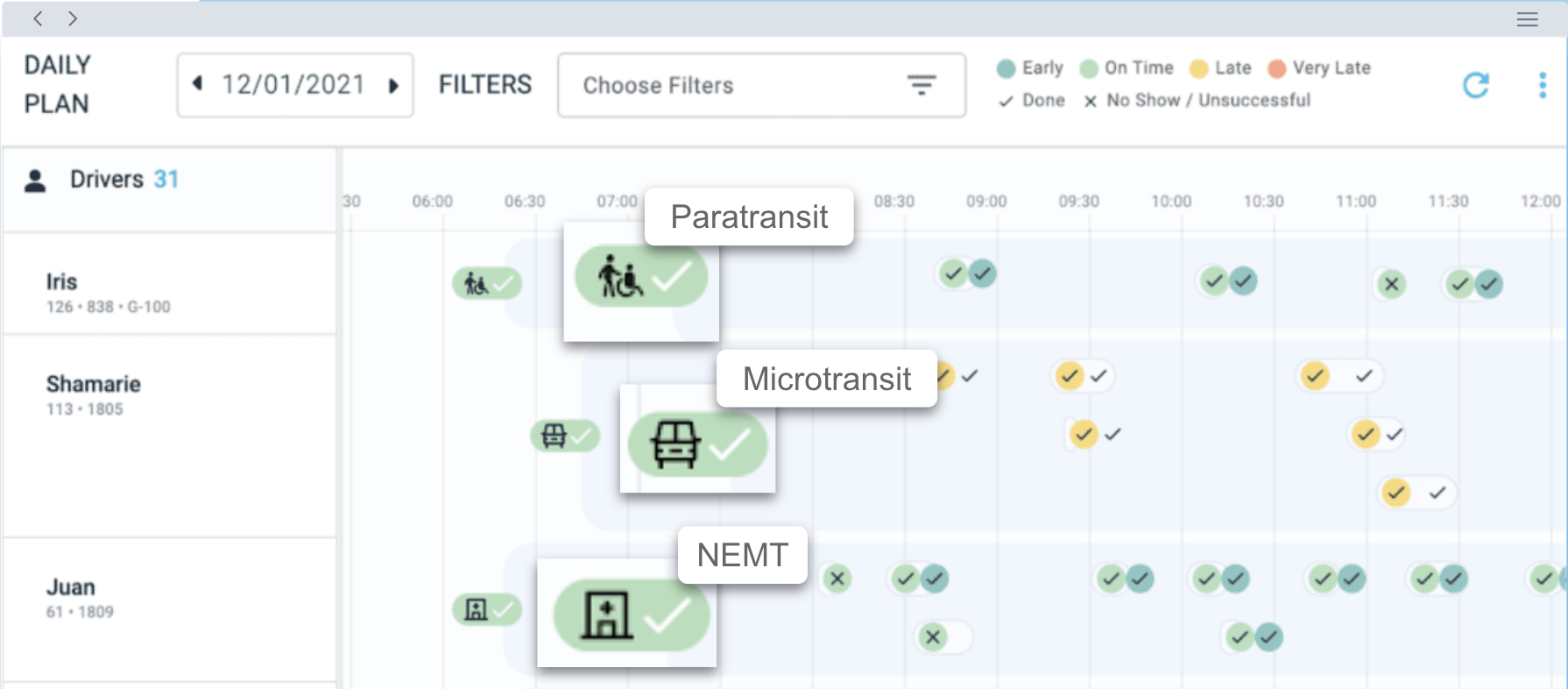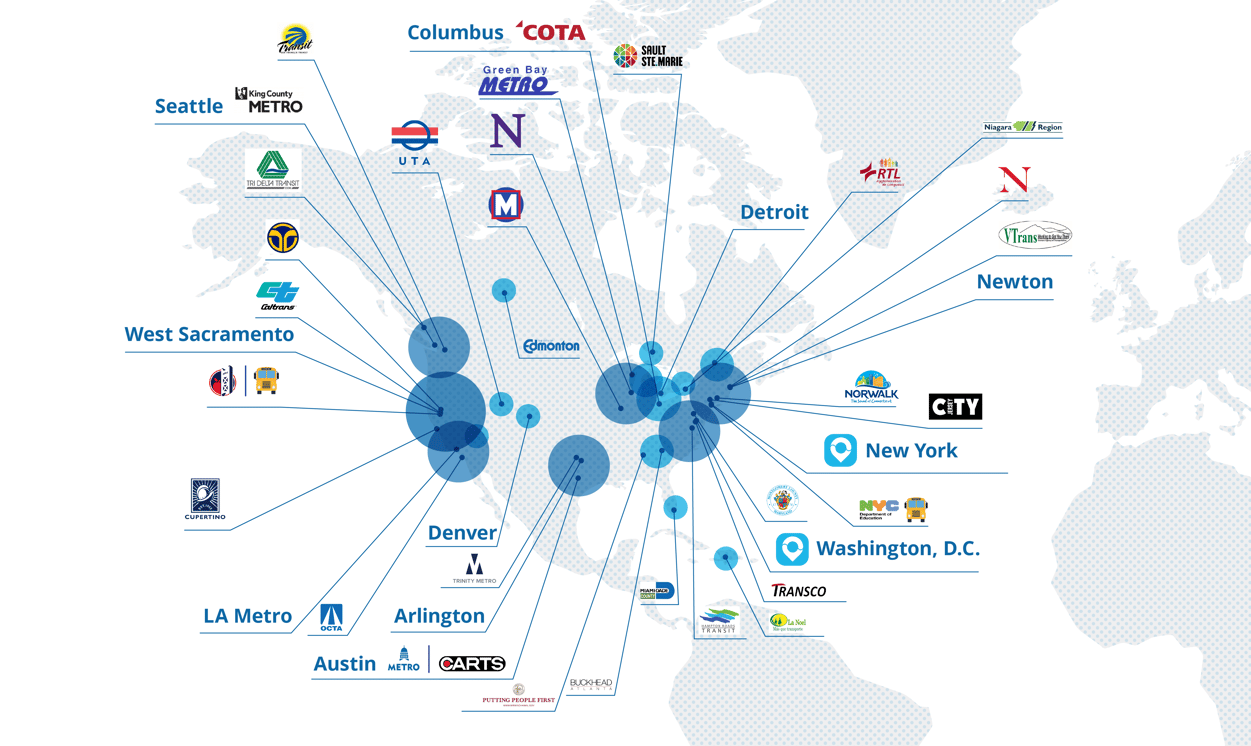Image: A select representation of cities and organizations using microtransit.
The short answer? Yes. Less than five years ago, there were no cities or transit agencies deploying on-demand microtransit powered by technology in the United States. Some initial pilot deployments in 2016 were notable flops — perhaps in part because they used fixed routes instead of the real-time dynamic routing that has since come to characterize microtransit — and some pundits were quick to claim microtransit was only a temporary fad. Despite the naysayers, many transit agencies and cities across knew better and saw the promise of on-demand microtransit to improve mobility, advance equity, and combat the climate crisis.
Based on a number of variables, it’s safe to say on-demand transit not only here to stay, but will be a growing and critical part of our transportation landscape.

Today’s footprint.
Right now, there are more than 100 microtransit deployments in about 40 states. We’ve seen dramatic growth in the past 18 months, and while some new projects experienced delays as a result of COVID-19, new deployments continue to launch at a steady pace during the pandemic. Based on the frequency and number of procurements that agencies are issuing for microtransit, it’s clear the number of deployments will grow throughout 2021.
When it comes to Via deployments, California has been a longtime leader in on-demand transit with nine networks across cities like Sacramento, Cupertino, and Shasta County. Similarly, Texas is tied with its West Coast counterpart with nine current microtransit services in cities like Austin, Fort Worth, and Arlington — the latter of which is one of the largest microtransit services in America.

It’s not just about the number.
Beyond the geographic footprint, the scope of deployments is another indicator that microtransit is officially mainstream. While on-demand transit services generally began as small pilot projects — which makes sense when the public sector first adopts new technology — today’s landscape is quite different. Some early adopters of microtransit are now into their third and fourth years of operation, with deep community support that has ingrained the service into the local transit ecosystem. At the same time, services have grown in size each year. Arlington — a Texas city of 400,000 — launched a relatively small service at the end of 2017. During the following three years, it expanded three times, and now the service is city-wide, with the city planning to deploy nearly 70 vehicles, providing convenient and affordable on-demand rides to and from anywhere.
An independent study determined the service was the single most effective tool in reducing carbon emissions in the entire Dallas/Ft.Worth/Arlington region (cutting congestion in the city by more than 400,000 vehicle miles) and, as the mayor recently explained, it’s also improving equity as residents are able to access jobs and other opportunities previously only reachable by private car.

In partnership with public transit.
As the technological march forward continues, it’s clear that the future of microtransit is integrated. Today, cities and transit agencies are more explicitly incorporating microtransit into their existing networks to create a holistic, seamless experience for riders. Consider these examples:
- Delaware Department of Transportation: With the aid of a federal grant, DelDOT will soon launch an integrated mobility service that will bring fixed route transit, microtransit, and paratransit into one system in Georgetown, Del., with the goal of advancing equity and access to jobs centers.
- Golden Empire Transit, CA: GET not only has perhaps the best transit agency name in the nation, it’s the first to launch a multimodal deployment that combines NEMT (non-emergency medical transport), paratransit, and microtransit.
- Summit County, UT: The County is working with Via to stand up a new transit and mobility agency that will provide one system of fixed route, paratransit, microtransit, and bikeshare, including on-demand access to trailheads.
As we work through COVID-19 challenges in 2021 and build a more equitable, sustainable, and resilient nation in its wake, it’s clear that on-demand microtransit will play a key role in transportation’s new normal.




